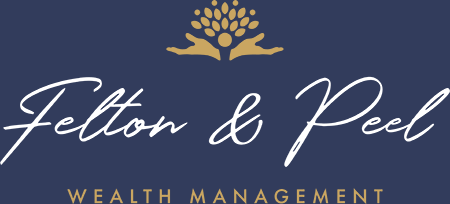
4 Important Tax Strategies for High-Income Earners
Since the Tax Cuts and Jobs Act passed in 2017, Americans have been tasked with navigating an already robust tax code. As a high-income earner, the stakes are even higher if you hope to avoid tax rates as high as 37% or even 40%.
High as those rates may be, there are strategies and techniques buried deep down in the tax code that can benefit taxpayers savvy enough to dig them out. Although some taxpayers will be limited in their tax reduction strategies because of their sheer income level, for many, staying abreast of subtle shifts in the tax code can really pay off.
Professional assistance is always a nice option, but in some cases, it might set you back more than $250 per hour. Therefore, I wanted to highlight four important tax strategies high-income earners can implement for themselves today.
Max Out Employer Benefits and Education Accounts
One of the most frequently used techniques to lower a high-income earner’s tax liability is contributing to a pre-tax retirement account. In 2021, the employee pre-tax contribution limit for 401(k) and 403(b) plans is $19,500. If you are 50 or older, you are eligible to contribute another $6,500 as a “catch-up contribution.”
Contributions to these types of retirement accounts will lower your taxable income, thus lowering your overall federal tax rate. Even if your employer doesn’t have a retirement account, don’t fret: you are allowed to contribute up to $6,000 to a traditional IRA, and up to $7,000 if you are 50 or older.
Some employers may provide additional employee benefits that allow you to lower your taxable income, such as flexible spending accounts (FSAs), deferred compensation plans, and health savings accounts (HSAs). Taking advantage of these perks allows you to make pre-tax contributions — and, again, lower your overall taxable income.
Lastly, let’s not forget about one of our favorite tools as financial planners, 529 plans. Although a 529 doesn’t offer a federal income tax deduction for your contribution, it does offer tax-deferred growth on your earnings. And when withdrawals are made for qualified education expenses — including up to $10,000 in tuition for private, public, or religious elementary and secondary schools — withdrawals are made tax-free.
If you’re trying to reduce your federal estate taxes, contributing to a 529 is a great option, too. A 529 plan allows a participant to contribute $15,000 via the 2021 annual gift tax exclusion, or $75,000 lump sum by implementing the five-year election strategy. This technique removes any contributions from your gross taxable estate, which can have rates as high as 40%.
Timing Gains and Itemized Deductions
For most investment strategies, trying to time the market is inadvisable at best. But, when it comes to tax strategies, timing is essential. By controlling when you realize gains or losses, you can move your overall tax rate in the direction that lowers your tax liability.
One popular strategy for taking advantage of this tactic: a Qualified Opportunity Fund. These funds were created to defer taxes on capital gains until the tax year 2026, which means taxes won’t be owed until April 15th, 2027.
Another way to defer or eliminate the gain on a taxable asset is by contributing your appreciated assets to a charitable trust. These trusts allow you to donate the appreciated asset now without paying any capital gains tax, all while receiving a tax deduction.
Lastly, when it comes to tax preparation, the use of itemized deductions vs. standard deductions oftentimes seems more favorable for higher-income earners. Consequently, some years taxpayers just don’t have enough itemized deductions to make itemizing worth their while, especially since the standard deductions were raised significantly in 2017 due to the passing of the Tax Cuts and Jobs Act.
If you are unable to take advantage of itemized deductions, then you may want to consider aggregating or “bunching” your itemized deductions together. This strategy works when you make a larger deduction every few years rather than smaller deductions annually. For example, instead of making a $5,000 charitable donation in 2020 and again in 2021 — an amount that’s well below the standard deduction threshold — you’d make one $10,000 deduction in one of those years and itemize it.
Selecting Tax-Friendly Holdings Within your Portfolio
Contrary to popular belief, all investment holdings are not created equally. Some investments generate more taxable events, such as interest and dividend payouts. Therefore, being mindful of your underlying holdings can potentially lower your tax liability.
For example, when you purchase tax-exempt municipal bonds, the interest received on those bonds is excluded from federal income tax and the net investment income tax (Medicare surtax). In addition, if you purchase the same bond from your state of residence, the interest on those bonds may be state income tax-free as well.
Another example: a technique called “asset location,” which is the practice of placing high-tax investments in tax-deferred or tax-exempt accounts rather than taxable accounts.
Therefore, if your goal is to minimize taxes and you purchase a small-cap technology stock, you may want to consider placing those assets within a taxable brokerage account. Generally, these companies don’t have a dividend payout, and all of your growth will be from stock price appreciation. Realizing gains from a growth-oriented stock allows you to hold it for longer than twelve months and ensure that you are taxed at long-term capital gain rates vs. higher short-term gain rates.
Utilizing Cash Value Life Insurance Policies
Once you have exhausted all pre-tax savings mentioned above, you might turn your attention to tax-deferred saving options.
A life insurance policy designed to accumulate cash — one with a minimal death benefit and the allowable maximum premium — can be used as a tax-favored vehicle for savings. Using life insurance as an investment vehicle can provide benefits such as tax-deferred growth within your cash value and tax-free cash withdrawals via policy loans — all without being subject to annual contribution minimums like 401(k)s and IRAs are.
And perhaps most importantly for high-income earners, life insurance policies aren’t subject to restrictive income thresholds.
Having a financial planner with the knowledge and expertise to help you with tax planning can make all the difference when it comes to navigating your nest egg. Here at Felton & Peel, we look forward to helping you grow your wealth in a way that works for you.







